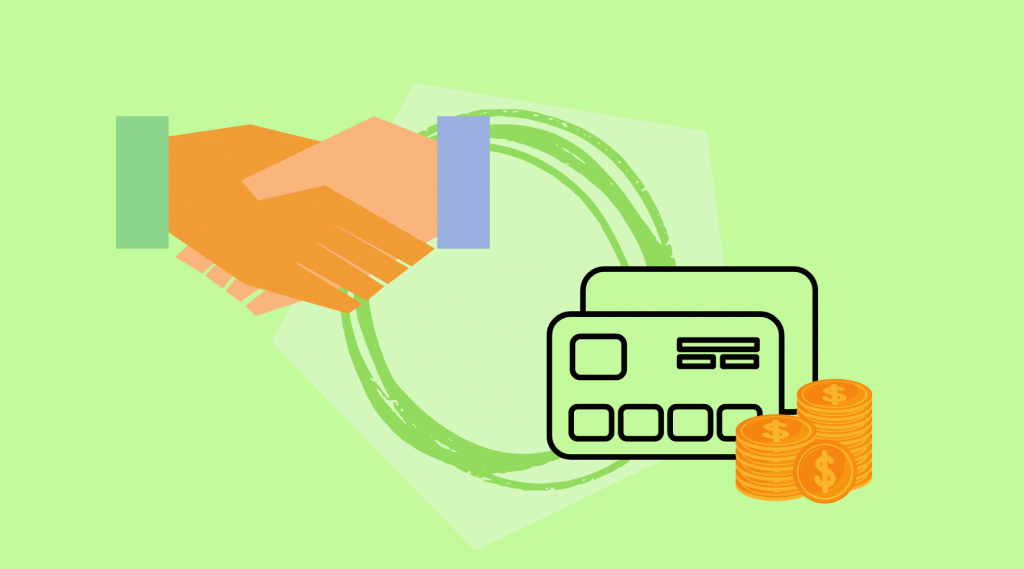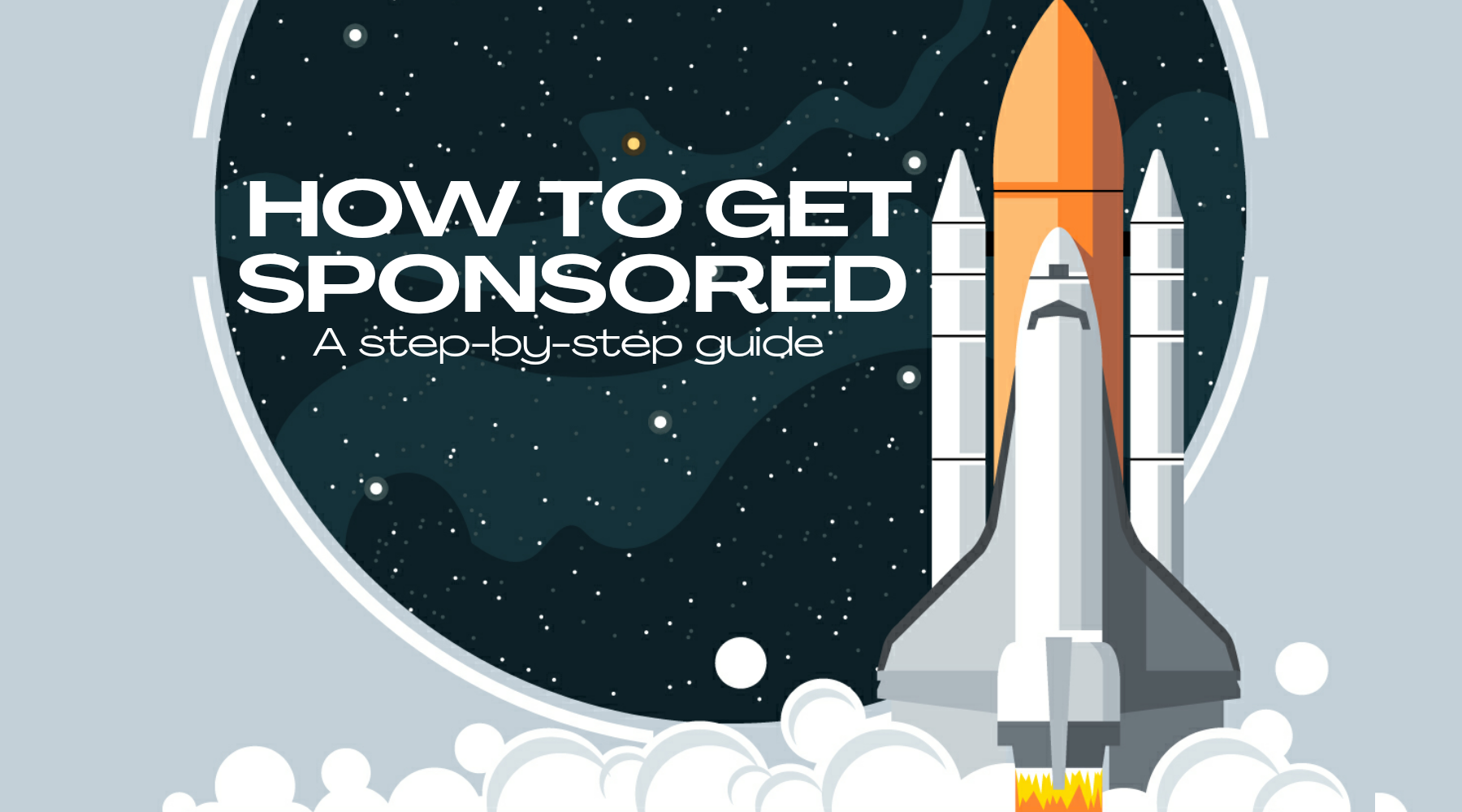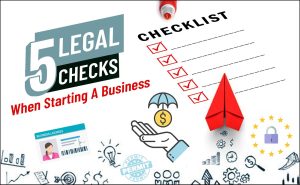Sponsorship is an excellent source of additional revenue and contacts. It can also be a driver of individual giving, the most lucrative piece of the philanthropic pie. Naturally, one of the most crucial questions that any new business has is how to get sponsored?
Maybe you want to get sponsorships. You may have tried before without success. Maybe you want to get companies to support your blog, business, or idea, but do not have experience landing deals. Getting a business to sponsor your next thing does not have to be sleazy and is much easier than you think.
Getting paying sponsorships is not luck. It is putting in the effort and using techniques that work.
The aim is to give you more than the sponsorship 101 stuff. This will be an advanced placement course in identifying, selling, and closing sponsorships.
Below you will find the step-by-step process used time and time again to land sponsors for various projects. This is not rocket science, and you do not need any experience. You just need to do the work and believe in what you are selling.
What is Sponsorship?
Sponsorship is when a company commits money or resources to a nonprofit event or program to exchange specific promotional benefits.
At its core, sponsorship is an exchange of money for services.
The company gets its name and logo on a banner, t-shirt, poster, brochure, or other kinds of marketing and communications related to the event or program in exchange for supporting the nonprofit.
The business objective of sponsorship is to reach a specific target audience and earn a “halo” to support a good cause. The favorability sponsorship delivers can give a business a competitive edge that goes beyond product and price.
Increasingly, businesses of all sizes strive to balance profit with purpose through sponsorship and other socially responsible marketing.
Sponsorship is win-win and work-work. Both the nonprofit and for-profit benefit from the partnership, but success depends on them working together to ensure each other’s success.
Take the example of the Boston Marathon, run by a nonprofit organization, the Boston Athletic Association, or BAA. Of course, the event has several long-standing corporate sponsors, including running shoemaker Adidas.
How does the BAA benefit? They raise millions of dollars from Adidas and other corporate sponsors. Adidas raises the profile of the event. It enhances its reputation as a world-class marathon.
How does Adidas benefit from the sponsorship? Adidas gets access to avid runners who are the perfect customers for Adidas’ shoes and gear.
Being associated with such an important and famous event gives Adidas a favorable connection with thousands of runners and millions of spectators – both along the course and watching at home.
Is the partnership a win-win for both partners? Absolutely. Do the BAA and Adidas have to work hard to ensure each other’s success? You bet.
One thing you do not need to succeed with sponsorship is a large athletic event like the Boston Marathon or a global shoe company like Adidas. There are many sponsorship opportunities with organizations of all sizes and types.
What is a Sponsored Post?
A sponsored post is paid for by the poster to reach a wider audience. There are two main types of sponsorships: In one, a brand creates a post and pays the blogger for access to a custom audience.
On the other, a brand sponsors another blogger — often called an “Influencer” — who creates a post that features the brand somehow.
Here is more detail on each type of sponsored post:
-
Promoted Posts & Ads
All social media platforms come with a native ad management platform. Advertisers can use this tool to customize a target audience. They can invest a specific amount of money to get their post in front of Instagrammers who identify with this audience.
The thing to remember here is that the advertiser is making and publishing the post. They are paying Instagram for the audience they want access to, but the post is theirs to create.
-
Paid Sponsorships
Paid sponsorships take place between a brand and another blogger. Typically, this user has a personal brand and attracts an audience of his or her own. This user is often called an “influencer.”
This person can then use the steps explained earlier in this article to find and work with brands that appeal to a similar audience. When they find a brand that wants to sponsor them, they can charge this client a certain amount to create a post that features their product or service.
Think of it as social media product placement.
Influencers are similar to ad managers in the sense that they both draw an audience that brands might not otherwise have access to usually. However, the differences in this type of sponsorship are that the brand is paying the influencer.
There are numerous influencers for each industry.
Steps to get Sponsorship

-
Set up a Sponsor page and media kit on your site
One of the first (and easiest) ways to get sponsored blog posts is to put a page on your website inviting pitches. This is a great, direct way of letting people know you are available to receive sponsored posts.
-
Define your brand.
You will see the best engagement if you can define your niche. Do you want to post food and health-related content, or focus on fashion? Whatever the case, it is essential to know how to establish your brand.
Branding depends on the type of content that you post. But it also has a lot to do with your overall aesthetic. How do you want to style your posts? What is your messaging? To further solidify your brand, you might want to consider creating a cohesive feed theme.
Specificity is key. The right influencer’s posts are distinguishable and unique. When a user is flipping through her feed, she will be able to pause and recognize every time she sees a post from that influencer.
As she continues to see similar content, she will grow to trust that brand as an expert in the field. If the influencer suddenly and randomly changed course, the user might not understand or trust the content anymore.
You might also want to connect your brand with an online presence. Creating a website with a similar aesthetic and messaging is an excellent way to do this. The more you unify your social media accounts, the easier it will be for brands to distinguish how you can help them.
-
Know your audience and demographics.
Knowing your audience is critical for convincing a brand to work with you. It is mutually beneficial for you, as well. If you understand your audience, you can correctly identify which brands will see the most success from using you as their sponsor.
Start by gathering the basics — what is your core demographic’s gender, age, and geographical location? Which of your posts do they like the best? What times of day do they respond best to content, and what can you infer from this?
The demographic information you gather will help you pitch partnerships with brands. Brands want to know whom they can reach if they work with you.
Say, “You will be reaching thirty-something, working women, primarily from New York. They often use Instagram first thing in the morning and prefer fitness content”. This is undoubtedly more powerful than saying, “You will be reaching women.”
Your platform is your message and your fan base — people who know you or align themselves with people you know. Your demographic is the market you are after, and you want to have statistics about that market at your fingertips.
For example, if your market is women, be aware that they make or influence 85 percent of purchasing decisions. They are starting businesses at twice the rate of men. Find out your target market’s spending power and purchasing habits—Research the median income and educational level.
Consider the publications your demographic reads. Then ask for media kits from those publications. According to Hollander, media kits will reveal incredible things about your demographic–all provided for free. Do not forget cause-related marketing, either.
-
Creating Your Value Proposition
Your value proposition is a paragraph or two that clearly explains the thing for which you are trying to get sponsors.
- What is the mission of the thing you are trying to do and for which you need sponsors?
- Who is the demographic?
- What is your audience size?
- What benefit does a sponsor get?
- Is anyone else on board, or has anyone talked about this (credibility building)?
- How will this help my company?
Answering these questions will help you create your value proposition. Your answers should range from 1-2 sentences. They should focus on the specific benefits you will provide. Take a sentence from each answer. Then massage it into one 4-6 sentence paragraph.
Here is an example value proposition I made for a conference I was hosting.
The Awesome Conference will show how to do marketing more efficiently and with better results. We are inviting people passionate about marketing to join us in LOCATION on DATE.
The conference will cap at 300 attendees, and tickets go on sale to the pre-sale list on our website first (January 1, 2015).
Our conference organizers have worked with companies like Starbucks, Nissan, Jockey. They are flying in some of the world’s best speakers, including Name Drop, Name Drop, and Name Drop.
We are excited to make a dent in the marketing world and have our attendees learn new information about new products.
This value proposition should be used in upcoming steps I will be sharing, on your website, to your email list, on social media, etc. Use the heck out of this thing!
-
Post consistently.
CoSchedule gathered research from 14 studies to identify how often you should post on social media sites. For Instagram, they found you should post a minimum of once a day, but can post upwards of three times a day.
CoSchedule also found 8:00 am to 9:00 am, and 2:00 am, are the best times to post.
To grow your following, you must post at least once a day. Instagram’s algorithm favors new and fresh content. You do not want your audience to unfollow you or forget about you from a lack of consistency.
However, you will need to figure out what works best for you and your audience. Perhaps your audience feels bombarded when you post three times a day, or maybe they prefer it. Maybe your audience engages most with your posts at noon. It will take some trial and error and Instagram metrics tools to figure this out.
You may be serious about learning how to get sponsored on Instagram. Then you need to understand that there has to be some level of consistency in your posting to gain trust with your followers. Besides building trust, this activity is necessary for favorable placement with Instagram’s latest algorithm update.
To achieve consistency, post at least once a day, or several times, separated by a few hours to get the best engagement and likes. There is no magic number for a set number of posts to aim for every day, but it helps to post anytime between 8-9 am and 2 am in your local time zone.
-
Use hashtags and geotags.
Hashtags make your content more discoverable, so they are necessary for growing your following. You can use up to 30 hashtags per post. But TrackMaven found nine to be the optimal number for boosting engagement.
You will want to use hashtags as relevant to your content as possible. You will also need to check to make sure the hashtags you use are not broken or banned (take a look at this list of banned hashtags if you are unsure).
It would help if you chose hashtags that are not too broad. #Healthyliving, for instance, has over 20,000,000 posts. But #healthylivingtips only has 13,000. The less competition, the easier it will be for your content to get discovered.
When you peruse a hashtag’s page, you can also get a more profound sense of competitive posts. #Healthylivingtips might typically feature posts with food recipes. Your post is about cycling — this could deter you from using that hashtag.
Geotags are equally important, but for a different reason. Geotags can help people find you if they are interested in a specific location. This helps you gain more followers. It also helps you appeal to brands interested in reaching a specific demographic.
For instance, maybe a boutique sees you often post fashion tips from the California area. They may be looking to appeal to people in that region — it is a win, win.
-
Tag brands in your posts.
Okay, now you are officially ready to begin reaching out to brands. You have defined your brand and audience and have created some quality, original posts. Now, you should have a pretty good idea of what types of businesses would benefit from a partnership with you.
It is essential to start small. If you are interested in skincare, do not go straight for Estee Lauder. Instead, try tagging small skincare start-ups you have seen across Instagram already.
Let us take a look at an example. A travel influencer can post an image of herself wearing a Paul Hewitt watch. The image is high-quality and fits with her brand. She tags @paul_hewitt in her description. Even if Paul Hewitt does not pay her, it will at least put her on their radar.
Begin with small brands and tag them in your descriptions. Engage with your audience by responding to comments like “Where can I get one?” or “How much?”. The brand will notice that you are a suitable sales partner.
-
Include contact information in your bio.
Signal to brands your interest in becoming an influencer through your bio. Include an email or website so they can reach you, and include a press kit if possible.
For instance, you can include your email and website in your bio. You can also add a title such as “content creator.” Brands will have no doubt she is open to doing business with them.
Furthermore, you should use a website or blog as your chance to expand on your brand and demonstrate your versatility. Consider adding a Press Page to your website so that brands can take a look at your services.
You can add them to this page once you begin sponsoring brands. So brands can see you have influencer experience.
-
Organize Your Existing Contact List
One of your most powerful assets is your existing network. Whether you have 100 contacts in your address book or 10,000, these people are your starting point. Here are four things to realize about this list of people:
- You have already established trust with them. (unlike social media)
- They may not be potential sponsors for your event/blog/thing. But they will be your best chance at helping you find referrals, get introductions, and give you feedback.
- Feedback can be more important than sales in the beginning.
- You do not need a ton of contacts (I started with just 200 in 2008).
Build a Google Spreadsheet (or Excel) with your contacts in it. I recommend column headings such as Name, Email, Business, and How You Know Them. Further headings can be Contact Date, Response?, Introductions?, and Notes.
There are probably CRMs out there that you can pay for, but I like Google’s simplicity.
A little trick of the trade for you: Do not know where to find your existing contacts? Go to your email inbox or your text messages on your phone. Your first contacts are the last 20-30 people you emailed/texted. Boom!
-
Know your worth and have a Sponsorship Target.
Make sure you know how much you are going to charge when brands reach out to you. The industry standard is $10 for 1,000 followers, but it could also vary depending on how many likes you post. Additionally, as you grow, you will be able to charge more.
While you will want to have a minimum set, you can negotiate to encourage brands to pay more. Perhaps for $300, you will throw in five Instagram Story posts and a link in your bio to their website 24 hours. Sweeten the deal by using other platform features.
Once you have your pricing structure nailed down, you will need to know how to sponsor a post on behalf of the brand you are working with then.
Now, keep in mind there are two different kinds of “sponsored” posts: those for which brands pay Instagram, and those for which brands pay another user.
-
The Bull’ s-Eye: Supporters
The bull’ s-eye is your sweet spot and where you should aim. The companies within the bull’ s-eye are existing supporters of your organization. These companies already give you money. You will need this. First tries are rarely perfect, and these partners will have the patience and forgiveness you will need to try again safely.
-
The Inner Circle: Contacts
You know these people, and they know you. But they are different from bull’s eye supporters for one key reason: they have not given you any money.
Examples of useful contacts are your organization’s vendors. They can also introduce you to a company that can. Another example of contacts is your board members’ contacts.
-
The Outer Circle: Suspects
The companies in the next circle are not even prospects. I call them suspects—that is how weak their connection is to you. These companies have no connection with your organization. They do not know you, and you do not know them. This is the most challenging circle to work. However, it also has the most potential because 95 percent of companies are neither supporters nor contacts.
-
How to Get Through to Sponsorship Prospects
Thanks to email and social media, you have many ways to contact prospects about a sponsorship opportunity. But more often than not, your first connection with the prospect will be over the phone. There are many questions about the best ways to get through to prospects. Here are my recommendations.
-
Should I leave a message?
It depends on your style and what works. For some, leaving a message would dissuade a prospect from picking up your call the next time.
For others, a message softens up a prospect, so it is not a total cold call when you do get them on the phone. When you do talk to them, they may be slightly inclined to your proposal.
-
How should I deal with gatekeepers?
Make them your friends. Remember, it can be a long, hard slog to success without them. Remember, gatekeepers want something too. Sometimes a friendly voice is what is saving them from boredom or an otherwise crappy job! Remember these gatekeepers around the holidays. Sending over a branded half-zip sweatshirt to a gatekeeper can earn you an ally.
-
When should I stop calling?
The prospect may tell you to get lost. Otherwise, you should call them occasionally to pitch them on new programs, follow up on emails, invite them to events, etc. It may take many years to convert a prospect into a sponsor.
-
Keep it short.
There is nothing worse than a long email. Keep it to 150 words or less. Put yourself in their shoes. How do you feel when someone sends you an email that you have to keep scrolling through to the finish? Did you want to get another email from that person?
-
Bullet everything. Attach nothing.
To make it easier to scan your email for crucial info, bullet, bold, underline the things you want your prospect to read and remember. Also, everything should be in the email itself. Avoid attachments.
-
Use email to accelerate and entrap.
When you call a prospect about sponsorship, they will say, “I never got the info.” “Really? ” you will say. “I am resending the info right now. Do you have it open so I can walk you through the sponsorship?” Yep, love email. It is like an electronic speed trap for prospects.
-
Your First Email to Your Existing Contacts
There are some essential things to remember when you are sending a cold email to your contacts about the thing for which you want to get sponsorships.
-
- Do not think of them as sales opportunities
- Do not mass email people (personalize, personalize, personalize)
- Remember the trust you have built. Keep it intact by being personal and asking for help/feedback
- Think short and sweet (people are busy!)
Here is an example email I would write to someone on my contact list for the conference I mentioned in Step 1:
Hey FRIEND NAME,
I hope all is well with you! Thanks again for dinner last week. It was a blast.
[IMPORTANT: You want to show these are not mass emails]
I am running a fantastic conference on DATE in LOCATION called CONFERENCE NAME if you have not heard. I am super excited about it, and I would love to ask for your help with two things. It will only take you a minute or two, I promise!
- We are looking to secure sponsors for the conference. I wondered if you can think of business owners that might be a good fit for me to pass along some information? If you do, I would love a rapid email introduction! I will do the hard work from there
- Do you have any other thoughts for me or feedback? Have you been to any conferences and remembered things you loved or hated? Feel free to check out our website at awesomeconference.com.
Appreciate your time and help with a couple of introductions!
Chat soon,
YOUR NAME
Monitor the responses you receive from these personalized emails. I guarantee you will be surprised at how many paying sponsors show up if you offer something they think might be valuable to them. Be diligent in updating your Google Spreadsheet!
-
Pitch paid sponsorships.
If you use Google AdSense, you will see what sorts of brands are attracted to your site pretty quickly. This is an effective way to find more brands to pitch your sponsored post service.
When pitching to these brands, tell them about you, your site, your readership, and how you want to work with them. Your media kit will most certainly come into play here.
This will give the company the information they need to make a decision and smooths the relationship upfront.
There is nothing wrong with reaching out to brands and offering your services. With the right pitch, you might land some gigs without waiting for brands to find you.
Look for brands that invest time and money into their online presence. You can also find out the sponsors of similar influencers in your industry.
Remember, it is okay to start small. Working with smaller brands will allow you to build a portfolio.
Once you have curated a list of brands that might want to partner with you, send them an email. In your pitch, clearly and briefly outline who you are, what you do, and any achievements you have in the field that make you an expert.
Then, explain why you are a good fit for the brand and include data such as follower count and average engagement rate.
-
How To Send an Effective Pitch Email (That Gets Answered!)
Pitch emails are different from emails to your contact list. Unlike your contact list, the people you send pitch emails with probably will not have any context with you (or established trust). Because of that, keep a couple of things in mind:
-
- Personalize your emails. Again, do not mass email a list
- What problem can you solve for them with your offer?
- Include pricing but show the value
- Use another Google Spreadsheet to keep track of “leads.”
You can use a similar version of the email template in Step 3, but you will want to make sure you put your value proposition in the email.
-
The Secret Art of the Follow Up Email
Follow-up emails are EXTREMELY important in closing deals.
75% of the sponsorships come from a follow-up email, not from the initial pitch email.
Follow-up emails work well because people are busy, especially people you have never emailed before.
Many people tend not to respond to the first pitch emails they receive. They wait for people who put in the effort and follow up with them.
While following up can seem like a daunting task, you can streamline the process significantly by using FollowUp.cc. It is an entirely free service that lets you put a time you want to follow up directly in the Bcc field of the first pitch email.
E.g., 6days@followup.cc would send you a follow-up reminder six days after sending your first email.
If you have created a separate Google Spreadsheet for your email pitches (which you should), make sure to include a Follow-Up column. Again, be diligent about updating this spreadsheet.
-
Dealing with the Dreaded “No”
Let us be honest. If you are sending pitch emails, you will probably get some “Nos.” I have received plenty of them, but I do not let them discourage me. Do not get offended when someone says no. Realize that people are not saying no because you are a terrible person. They say no because:
-
- Your sponsorship might not be a good fit
- So, they may not pay for advertising/marketing
- They may not have the budget
- Also, they could have a conflicting event
- Maybe they had a bad experience with another conference
- They could be jerks (jk, maybe)
As crazy as it may sound, you can get multiple “No” emails into sales. You have to try again in a different way. Just sending a pitch email is not always the answer. Often you need to get creative and think outside the box.
-
Closing the Sponsorship Deal
Closing a sponsorship deal is not easy, especially these days when companies are scrutinizing everything and watching every penny. So you could give an excellent presentation and still lose the deal if you are not careful.
-
Build all your sponsorship packages a la carte.
Please do not walk in with one sponsorship option for them to approve or deny. Build all your sponsorship packages from the ground up, swapping things in and out based on the prospect’s needs, interests, and budget.
-
Offer to lend a hand whenever possible.
When companies buy a sponsorship for a dinner gala, they worry they will not be able to fill the table with senior people from the company. Offer to have your gala chairperson call key members of the senior team with a personal invite.
-
The best things in life are free.
A company shares the opportunity to support your nonprofit with its employees and customers. You raise more money than you ever could from the company checkbook.
-
Increase the touchpoints.
Whenever you are working with a business on a sponsorship, look for ways to make it less transactional and meaningful. Invite the business owner to visit your offices or to attend a special event as your guest. Have board members or existing partners call them to explain the value of partnership and how positive the experience has been.
-
Under Promise and Over Deliver (Plan for this!)
This one is simple. Do not offer everything and deliver crap. It would help if you planned to “wow” your sponsor with extra stuff they did not expect.
A quick example of this can be found in customer service:
- They have a 2-hour customer service call-back guarantee. They guarantee a call within 2 hours for a service request.
- However, behind the scenes, it is a 1-hour guarantee. So they always impress customers by calling them early (over-delivering). Brilliant!
-
Track Everything from Sponsors
Use contact management software (CMS) to keep track of all your prospects and any interactions. Your CMS can help you raise more money and sell more sponsorships. Period.
-
Whatever software you use, develop a system.
Label current sponsors as “Prospect +” and unaffiliated companies as just “Prospects.”
Vendors that were also sponsors are labeled “Vendor A.” Vendors that are good candidates for sponsorship are labeled “Vendor B.” Vendors that are not suitable prospects were labeled “Vendor C.”
-
Record everything.
Promptly record any fact or communication about a prospect. Did you send a sponsorship letter? Do you leave a voicemail? Log it in. Saw a recent story online on a company’s new product line? Paste the link into the prospect’s note.
-
Let the software do the work.
Leave reminders, calendar updates, to-dos, and institutional memory to the software–backed up, of course! But the software is only as good as the person using it. So, garbage in, garbage out.
-
Maybe you require funding instead of sponsorship
Many new and budding organizations think that they need great sponsorships to get going. But they fail to realize that their business requires investors more than it requires sponsors.
Investors have a different mindset from sponsors. They look into the financial aspects of the business. So, organizations should go through a thorough financial analysis of their business. It will help them to plug any financial gaps and induce investors.
Ensure full disclosure of Sponsorships to your followers

In the past couple of years, brands have come under fire to hire influencers but not make it clear to the audience that these influencers were getting paid.
Department store Lord & Taylor, for instance, settled charges with the FTC in 2016 after paying 50 influencers to wear a dress in their posts without hashtagging #sponsorship or #ad.
Influencers are supposed to hashtag #ad or #sponsored in posts for which they are being paid. However, these tags make some brands uncomfortable because it makes the post appear inauthentic.
In 2017, Instagram released a paid partnership feature to combat this issue. If you tag a brand in a post, and the brand confirms the relationship, the ad will be marked at the top with a “paid partnership” label. This also helps the brand gather data regarding how well the campaign is performing.
Your followers must know if you are getting paid to promote a product. Ethics aside, it could destroy your account’s credibility if you are caught, and lose everything you have worked hard to build. You can lose an authentic, trusting community.
If you genuinely do not want to post #ad or #spon, there are some ways around it — for instance, Airbnb created the hashtag #Airbnb_partner to signal a paid partnership without using the word “ad.”
Conclusion
Sponsored blog posts are one form of income that many bloggers take advantage of usually. They can be a great way to add additional content to your site and get paid to do it, but it is essential to be selective when choosing whom to work with
Ultimately, getting sponsored is not easy — it takes time, effort, and perseverance. But if you work hard to differentiate yourself in the industry and connect personally with your followers, it can be extraordinarily rewarding.
You will have something of value that other people want. Do not beg for anything, put together a hot deal, and success is guaranteed.
We are one of the largest venture capital firms, come grow with us!









